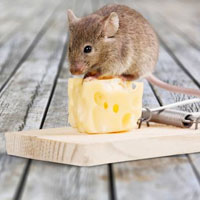For Effective Rodent Control Services, All Day Pest Control Mill Creek East Is The Name To Trust in Mill Creek East, WA. Our Rodent Control Experts Provides Professional Rodent Elimination Services.
Dealing with rodents can be challenging, but All Day Pest Control Mill Creek East has the best rodent solution in Mill Creek East, WA. Our effective and reliable rodent control solutions are designed to Eliminate Pesky Rodent quickly and permanently. We understand the health hazards that rodents pose and use humane methods to ensure no harm or stress to the animals. Trust us to get rid of your rodent problem for good.

Rodent Control Near Me in Mill Creek East, WA
Rodents can cause a lot of problems in your home or office, from contaminating food to causing structural damage. Not only are rodents a nuisance, but they can also be dangerous. Our team of experts offers Rodent Control Near Me in Mill Creek East, WA that will get Rid Of All The Rodents in your home or office for good. They can carry diseases and parasites that can make you and your family sick. We use humane methods that are safe for both you and the animals. Call us at 877-724-3734 to schedule an appointment.
Rodent Pest Control in Mill Creek East, WA
You've seen the horror movies. You know that if you have rodents in your home, you're in for a world of trouble. Not only are rodents unsightly and gross, but they can also be dangerous. Our Rodent Pest Control in Mill Creek East, WA is the solution to your Rodent Problem. Our team of experts will get rid of the rodents and make sure they don't come back. We also offer a warranty on our Rodent Control Services so you can rest easy knowing your home is rodent-free.
Commercial Rodent Control in Mill Creek East, WA
 Commercial rodent control is a specialized field, and many companies don't have the expertise to deal with rodents in a commercial setting. Our company provides safe, effective commercial rodent control in Mill Creek East, WA that will get rid of rats and mice for good. We have Extensive Rodent Control Experience in this field, and our treatments are tailored specifically for commercial properties.
Commercial rodent control is a specialized field, and many companies don't have the expertise to deal with rodents in a commercial setting. Our company provides safe, effective commercial rodent control in Mill Creek East, WA that will get rid of rats and mice for good. We have Extensive Rodent Control Experience in this field, and our treatments are tailored specifically for commercial properties.
Rodent Control Services in Mill Creek East, WA
You have a rodent problem and you don't know what to do. Do you hear scratching or gnawing noises at night? That could be rodents inside your walls. Not only are they a health hazard, but they can also cause serious damage to your property. Our team of experts will identify the Source Of The Infestation and remove all of the rodents quickly and safely. Our Rodent Control Services in Mill Creek East, WA is the answer. We also offer Comprehensive Squirrel Removal Services that will take care of your squirrel problem for good.
Residential Rodent Control in Mill Creek East, WA
 Residential rodent control is a critical service for any homeowner, but it's often overlooked or considered unimportant. Rodents and mice can be destructive pests, causing serious damage to your home and putting your health at risk. We use the latest technologies and techniques to get the job done quickly and thoroughly. Our Team Of Professional Exterminators offers comprehensive Residential Rodent Control in Mill Creek East, WA that will Eliminate These Pests from your home and protect your family's health.
Residential rodent control is a critical service for any homeowner, but it's often overlooked or considered unimportant. Rodents and mice can be destructive pests, causing serious damage to your home and putting your health at risk. We use the latest technologies and techniques to get the job done quickly and thoroughly. Our Team Of Professional Exterminators offers comprehensive Residential Rodent Control in Mill Creek East, WA that will Eliminate These Pests from your home and protect your family's health.
Rodent Control Companies in Mill Creek East, WA
Rats and mice can be a huge problem, not just because they're gross, but also because they can carry diseases. Not only are Rats And Mice Disgusting, but they can also carry dangerous diseases that can make you and your family sick. All Day Pest Control Mill Creek East is the best Rodent Control Companies in Mill Creek East, WA to get rid of rats and mice for good. We have the latest technology and Techniques For Rodent Control to ensure your home remains rat-free for as long as you live there.
